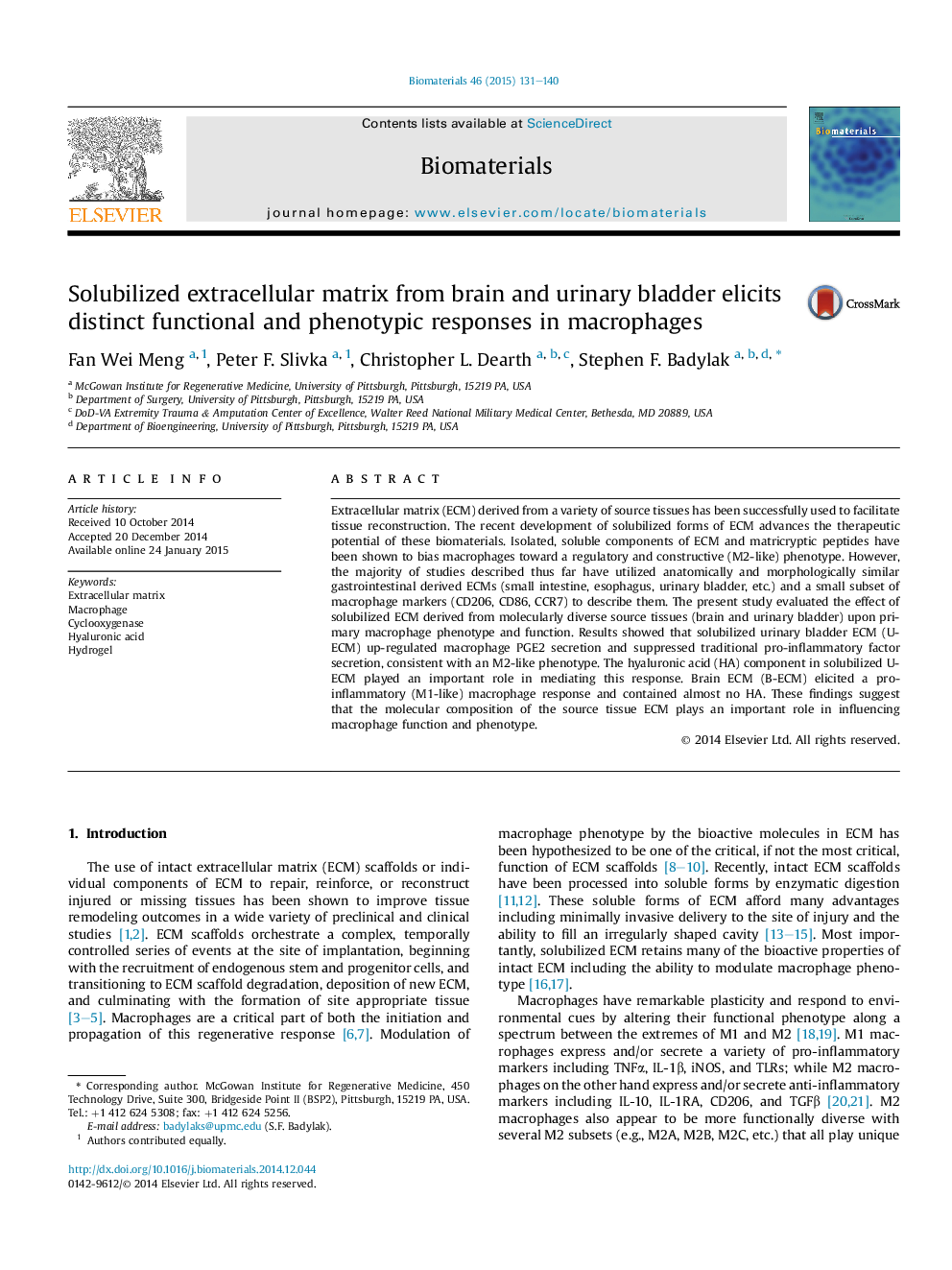| کد مقاله | کد نشریه | سال انتشار | مقاله انگلیسی | نسخه تمام متن |
|---|---|---|---|---|
| 6486198 | 427 | 2015 | 10 صفحه PDF | دانلود رایگان |
عنوان انگلیسی مقاله ISI
Solubilized extracellular matrix from brain and urinary bladder elicits distinct functional and phenotypic responses in macrophages
ترجمه فارسی عنوان
ماتریس خارج سلولی سلولیز شده از مغز و مثانه ادراری، پاسخهای عملکردی و فنوتیپی مشخصی را در ماکروفاژها نشان می دهد
دانلود مقاله + سفارش ترجمه
دانلود مقاله ISI انگلیسی
رایگان برای ایرانیان
کلمات کلیدی
ماتریکس غیر سلولی، ماکروفاژ، سیکلوکوکسیژناز، اسید هیالورونیک، هیدروژل،
موضوعات مرتبط
مهندسی و علوم پایه
مهندسی شیمی
بیو مهندسی (مهندسی زیستی)
چکیده انگلیسی
Extracellular matrix (ECM) derived from a variety of source tissues has been successfully used to facilitate tissue reconstruction. The recent development of solubilized forms of ECM advances the therapeutic potential of these biomaterials. Isolated, soluble components of ECM and matricryptic peptides have been shown to bias macrophages toward a regulatory and constructive (M2-like) phenotype. However, the majority of studies described thus far have utilized anatomically and morphologically similar gastrointestinal derived ECMs (small intestine, esophagus, urinary bladder, etc.) and a small subset of macrophage markers (CD206, CD86, CCR7) to describe them. The present study evaluated the effect of solubilized ECM derived from molecularly diverse source tissues (brain and urinary bladder) upon primary macrophage phenotype and function. Results showed that solubilized urinary bladder ECM (U-ECM) up-regulated macrophage PGE2 secretion and suppressed traditional pro-inflammatory factor secretion, consistent with an M2-like phenotype. The hyaluronic acid (HA) component in solubilized U-ECM played an important role in mediating this response. Brain ECM (B-ECM) elicited a pro-inflammatory (M1-like) macrophage response and contained almost no HA. These findings suggest that the molecular composition of the source tissue ECM plays an important role in influencing macrophage function and phenotype.
ناشر
Database: Elsevier - ScienceDirect (ساینس دایرکت)
Journal: Biomaterials - Volume 46, April 2015, Pages 131-140
Journal: Biomaterials - Volume 46, April 2015, Pages 131-140
نویسندگان
Fan Wei Meng, Peter F. Slivka, Christopher L. Dearth, Stephen F. Badylak,
